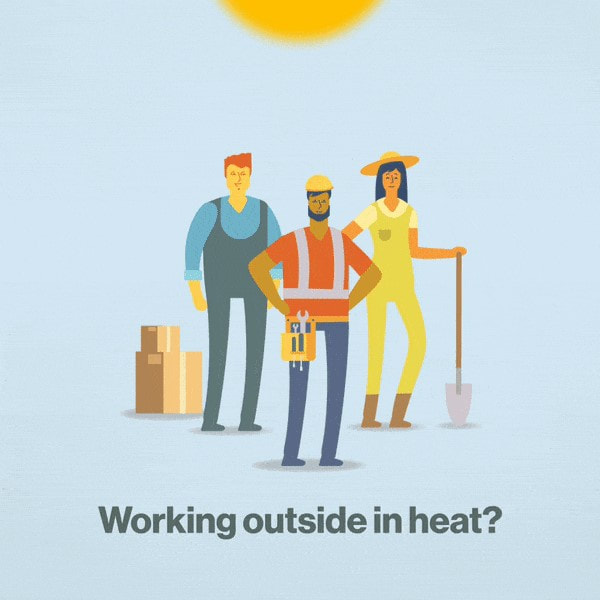- Reschedule work so the hot tasks are performed during the cooler part of the day.
- Reduce the time spent doing hot tasks.
- Arrange for more workers to do the job.
- Provide extra rest breaks in a cool area
Check in with employees
- Make sure workers have access to cool water and stay hydrated.
- Monitor the temperature. While there's no maximum temperature set under the Occupational Health and Safety Act 2004 or the Occupational Health and Safety Regulations 2017, for a worker to stop working - some workplaces may have their own policy around this. Check what your policy is.
- Regularly check if workers are showing signs and symptoms of heat illness (see signs and symptoms).
Consider transport options
Public transport could be affected by the weather so look at different options for getting to and from work.
If possible, work at a different location that is out of the heat.
Cover up & drink water
Wear hats and light clothing that still provide sun protection.
- Have cool drinking water close to where you are working.
- Drink water, even if you aren't thirsty - every 15 minutes.
Source: worksafe.vic.gov.au.

 RSS Feed
RSS Feed